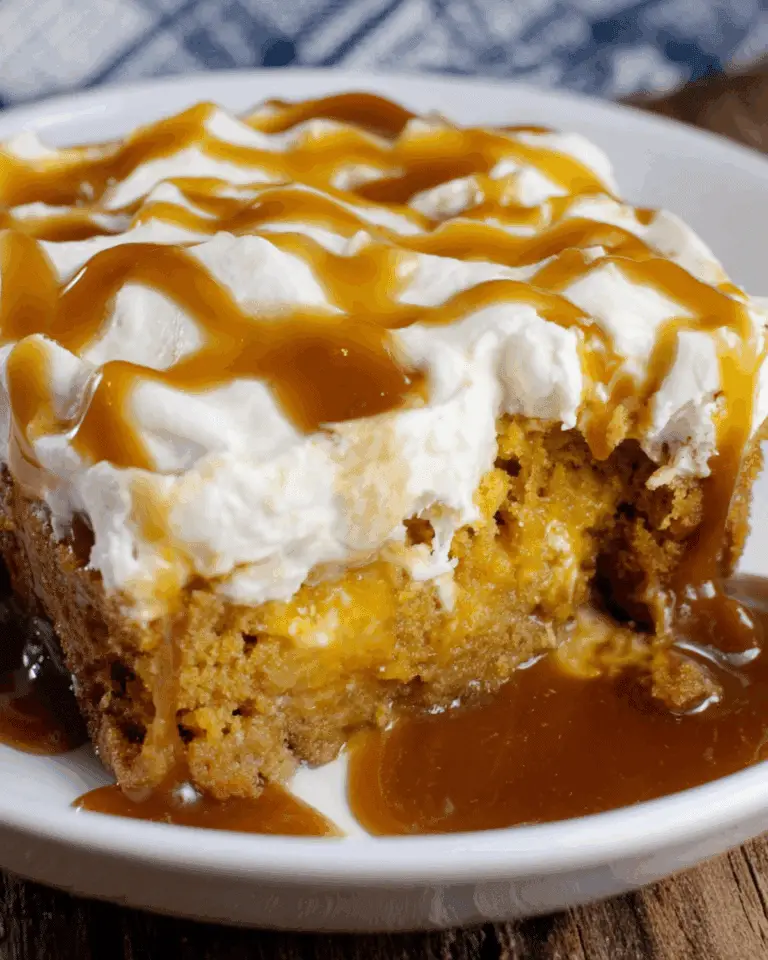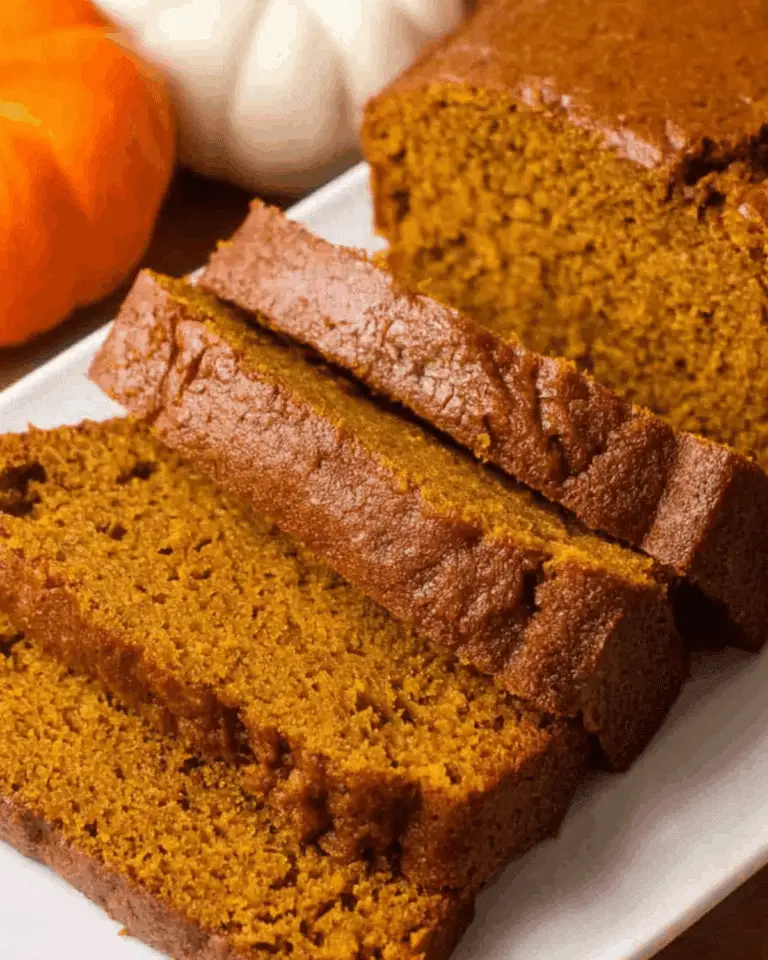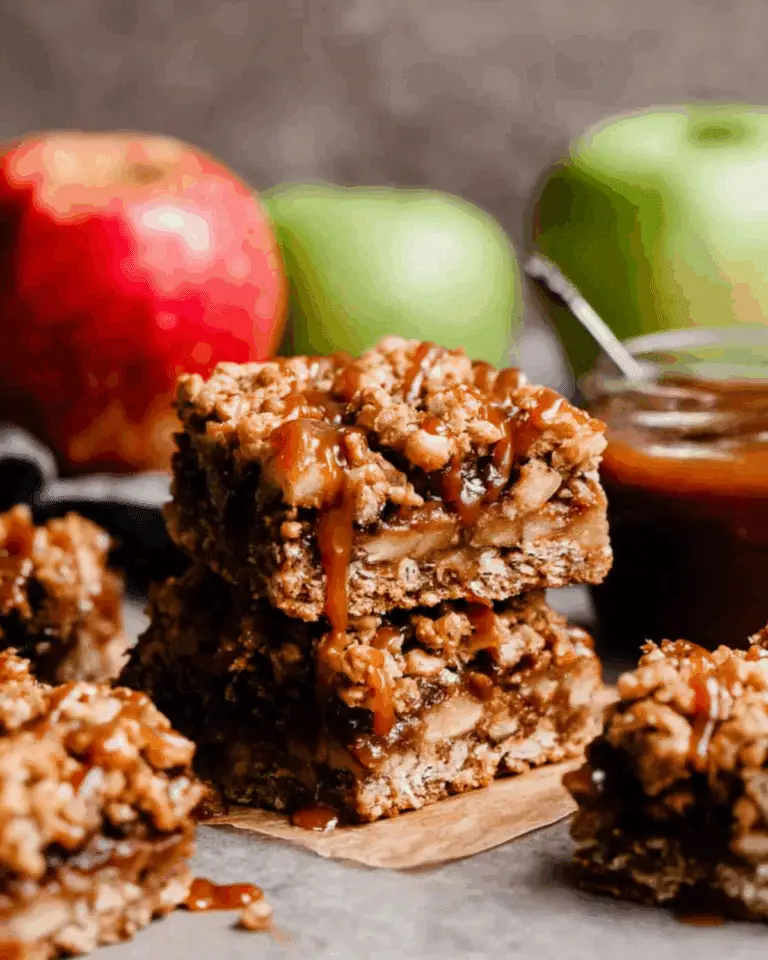If you’re craving something light, zesty, and undeniably moist, this Greek Yogurt Lemon Loaf is exactly what your kitchen needs. Bursting with citrus flavor and a luscious texture thanks to Greek yogurt, this lemon loaf recipe is both foolproof and crave-worthy. It’s perfect for spring brunches, cozy teatimes, or a make-ahead treat that stores beautifully. In this article, we’ll explore why Greek yogurt is a game changer in baking, how to nail the perfect lemon glaze, and even cover tips to store and freeze your loaf like a pro. Don’t miss our delicious lemon lavender loaf recipe for another bright citrus option.
JUMP TO
Table of Contents
The Ultimate Greek Yogurt Lemon Loaf
Why Greek Yogurt Makes a Difference in Baking
Greek yogurt brings more than just creaminess to this loaf—it’s a powerhouse in baking for moisture and lift. Its natural acidity reacts with baking powder, producing a soft, tender crumb that’s never dry. The high protein content helps structure the loaf, making each slice sturdy yet melt-in-your-mouth soft. Unlike regular yogurt, the thicker consistency of 2% or full-fat Greek yogurt ensures a denser, richer bite—skip the non-fat versions, which often add excess sugar and water.
Using Greek yogurt also balances out the sweetness of the sugar and glaze, adding a subtle tang that plays beautifully with fresh lemon. Many home bakers overlook this secret weapon, but once you bake with it, there’s no turning back.
The Perfect Balance of Tang, Sweetness & Moisture
The beauty of this lemon loaf lies in its harmony: lemon zest and juice deliver that bright citrus punch, while sugar brings a soft sweetness without overpowering the tart notes. The Greek yogurt, meanwhile, ensures that every bite is soft and springy, without being soggy. It’s this trifecta—tangy, sweet, and ultra-moist—that sets this recipe apart from ordinary quick breads.
Massage your lemon zest into the sugar before mixing. This step releases essential oils from the zest, amplifying the lemon flavor naturally—no artificial extracts needed.
Health Benefits of Using Full-Fat Greek Yogurt
Aside from its baking benefits, full-fat Greek yogurt offers a nutritional boost. It’s high in protein, lower in sugar than sweetened yogurts, and contains probiotics that support gut health. When compared to using sour cream or butter alone, it’s a more wholesome choice that doesn’t sacrifice flavor or texture.
If you’re watching your sugar intake, reducing the amount of glaze or skipping it entirely still leaves you with a rich, flavorful loaf. For a naturally sweet finish, top your cooled loaf with thinly sliced strawberries or a dusting of powdered erythritol.
Looking for inspiration? Try our healthy low-carb pumpkin pancakes for a wholesome breakfast option.
Essential Ingredients and Substitutions
Core Ingredients for the Lemon Loaf
Here’s what you’ll need to make this recipe work seamlessly:
| Ingredient | Amount | Purpose |
|---|---|---|
| Butter (melted) | ½ cup (110g) | Adds richness and moisture |
| Granulated Sugar | ¾ cup (150g) | Sweetness + lemon zest infusion |
| Lemon Zest + Juice | 1 lemon + 2 tbsp juice | Fresh citrus flavor |
| Greek Yogurt (2%) | ¾ cup (175g) | Moisture, tang, and structure |
| Eggs | 3 large | Binding + rise |
| All-purpose Flour | 1½ cups (250g) | Base of the batter |
| Baking Powder | 2 tsp | Lift and fluffiness |
| Salt | ½ tsp | Enhances all flavors |
Optional glaze:
- 1 cup powdered sugar
- 2 tbsp milk
- 1 tbsp lemon juice
Don’t miss our classic cranberry sauce that pairs perfectly with sweet or savory loaves.
Optional Add-ins and Glaze Variations
While this loaf shines on its own, you can customize it with:
- Fresh blueberries: Fold ½ cup into the batter before baking.
- Poppy seeds: Add 1 tbsp for a lemon-poppy twist.
- Alternative glazes: Use lemon juice + milk for a tangier finish, or skip it for a lighter option.
If you’re a citrus lover, consider brushing the warm loaf with lemon syrup before glazing to intensify the lemon punch.
Substitutions for Dairy-Free and Gluten-Free Options
Want a loaf that suits dietary preferences? Swap the Greek yogurt for:
- Coconut yogurt: Same thickness and slight tang
- Almond milk yogurt: Mild flavor, great for dairy-free diets
For gluten-free needs, substitute a 1:1 gluten-free baking mix. Avoid coconut or almond flour alone—they’ll throw off the moisture ratio.
Check out our crustless pumpkin pie recipe for a naturally gluten-free dessert.
Step-by-Step Instructions for a Flawless Lemon Loaf
Preparing the Batter Like a Pro
Start by preheating your oven to 350°F and lining a 9×5 loaf pan with parchment paper. In one bowl, whisk together flour, baking powder, and salt. In another, rub the lemon zest into the sugar using your fingers until fragrant—this simple step boosts flavor.
Next, add the melted butter to the sugar mixture and whisk until light and smooth. Incorporate the Greek yogurt and lemon juice, then whisk in eggs one at a time. Finally, fold in your dry ingredients. The batter will be thick—avoid overmixing to keep the loaf tender.
Baking Tips to Ensure Moisture and Rise
Pour the batter evenly into your prepared loaf pan. Smooth the top and bake for about 40 minutes. To test for doneness, insert a toothpick—it should come out clean or with a few moist crumbs.
Avoid opening the oven door too early, as this can collapse your loaf. Let it rest in the pan for 10 minutes, then transfer to a wire rack.
Discover great ideas like our nectarine crumble bars if you love fruit-packed baked goods.
Crafting the Optional Glaze for a Citrus Finish
For a classic lemon glaze, whisk together 1 cup powdered sugar, 2 tbsp milk, and 1 tbsp lemon juice. For more zing, replace some of the milk with extra lemon juice.
Drizzle the glaze over the mostly cooled loaf for a picture-perfect finish. Want a visual pop? Garnish with candied lemon slices or a sprinkle of zest.
Serving Ideas and Storage Tips
How to Serve Greek Yogurt Lemon Loaf (Warm, Chilled, or Toasted?)
This lemon loaf is incredibly versatile and delicious in every form. Serve it warm and fresh from the oven for maximum softness and aroma—it pairs beautifully with a dollop of whipped cream or a light dusting of powdered sugar. If you like a firmer texture, refrigerate the loaf for a few hours before slicing; it holds together well and tastes just as rich chilled.
Toasted slices are another brilliant option. Pop a slice in the toaster oven, then slather it with butter, lemon curd, or a spoonful of berry compote. For a savory-sweet brunch spread, pair it with soft cheeses and fresh fruit.
Looking for more inspiration? Try our pumpkin bread with cinnamon sugar topping for a cozy, spiced treat perfect for fall mornings.
Creative Pairings: Drinks, Spreads & Fruits
When serving this loaf, elevate your table by adding:
- Hot drinks: Pair with earl grey tea, chamomile, or a honey latte.
- Cold drinks: It goes well with iced green tea or a refreshing limoncello spritz.
- Spreads: Serve with lemon curd, clotted cream, or blueberry jam for flavor contrast.
- Fruits: Add sliced strawberries, raspberries, or orange segments on the side.
Make it a showstopper at brunch by plating it with edible flowers or a drizzle of warm glaze just before serving.
How to Store and Freeze for Later Enjoyment
This Greek yogurt lemon loaf keeps surprisingly well. Once fully cooled, wrap the loaf tightly in plastic wrap and store it in the refrigerator for up to 7 days. For best results, keep it in an airtight container to lock in the moisture.
To freeze, slice the loaf and wrap each piece in cling film. Then, place the wrapped slices in a freezer-safe ziplock bag. They’ll last up to 3 months. Thaw slices in the fridge overnight or microwave for 15–20 seconds for a quick treat.
Check out our easy pumpkin bread with crumb topping for another freezer-friendly favorite.
Common Mistakes to Avoid
Overmixing: How It Affects the Texture
Overmixing your batter is the fastest way to ruin the light, fluffy texture this loaf is known for. Once you add the dry ingredients, fold gently just until combined. If you mix too much, you activate the gluten in the flour, leading to a dense and chewy loaf—far from what you want in a tender, airy lemon cake.
The Right Zest-to-Juice Ratio for Lemon Flavor
Too much lemon juice can throw off the batter’s consistency, making it dense or soggy. The secret is in the zest. It carries more lemon oil and intense flavor than juice. Aim for zest from one full lemon and just 2 tablespoons of juice for a perfect balance.
Avoid bottled lemon juice, which often tastes metallic and flat. Freshly squeezed is always best for both the loaf and the glaze.
Don’t miss our lemon brownie bars if you want a richer, more decadent twist on citrus baking.
When and How to Apply the Glaze
Timing your glaze application is key. If the loaf is too hot, the glaze will melt right off. If it’s too cool, it may not absorb into the top for that perfect sticky finish.
Let the loaf cool for about 20–30 minutes before glazing. Drizzle slowly and let it settle. For a more even coating, use a spoon or pastry brush to spread the glaze evenly across the top.

FAQ: Greek Yogurt Lemon Loaf Questions Answered
Can I use sour cream instead of Greek yogurt?
Yes, you can substitute an equal amount of sour cream for Greek yogurt. Sour cream will still provide tang and moisture, though the loaf might be slightly richer and less protein-packed. For the same thick consistency, avoid using low-fat sour cream.
Why did my lemon loaf sink in the middle?
A sunken loaf can result from several issues:
–Underbaking: Always test with a toothpick.
–Overmixing: Incorporates too much air, which collapses.
–Too much liquid: Double-check your yogurt and lemon juice measurements.
Ensure your oven is fully preheated and avoid opening the door early in baking.
How long does the loaf stay fresh in the fridge?
Properly wrapped in plastic wrap and stored in an airtight container, your lemon loaf will stay moist and fresh in the fridge for 5–7 days. For best flavor, let it come to room temperature before serving.
Conclusion: A Spring-Inspired Loaf You’ll Make Again and Again
There’s something timeless and comforting about a good lemon loaf, and this Greek Yogurt Lemon Loaf delivers on every level. It’s easy to make, perfectly moist, and brimming with bright citrus flavor that feels like sunshine in every slice. Whether you enjoy it for breakfast, dessert, or a mid-afternoon treat, this loaf is bound to become a recurring favorite in your kitchen.
The key lies in the balance—tangy lemon zest, creamy Greek yogurt, and just the right amount of sweetness. Paired with a light glaze or eaten plain, this is a recipe that’s both satisfying and adaptable. Ready to try more citrus inspiration? Don’t miss our Italian limoncello cake recipe for a bold, boozy twist on lemon desserts.
PrintGreek Yogurt Lemon Loaf
This Greek Yogurt Lemon Loaf is a moist, fluffy, and citrusy bread made with simple pantry staples. It’s finished with an optional lemon glaze for an extra zesty kick, perfect for breakfast, brunch, or a light dessert.
- Prep Time: 15 minutes
- Cook Time: 40 minutes
- Total Time: 55 minutes
- Yield: 1 loaf (8-10 slices)
- Category: Bread
- Method: Baking
- Cuisine: American
- Diet: Vegetarian
Ingredients
- 1/2 cup butter, melted (110g)
- 3/4 cup granulated sugar (150g)
- Zest of 1 lemon
- 2 tbsp lemon juice
- 3/4 cup 2% Greek yogurt (175g)
- 3 eggs
- 1 1/2 cups all-purpose flour (250g)
- 2 tsp baking powder
- 1/2 tsp salt
- For the glaze (optional):
- 1 cup powdered sugar
- 2 tbsp milk
- 1 tbsp lemon juice
Instructions
- Preheat oven to 350°F (175°C). Line a 9×5-inch loaf pan with parchment paper.
- In a bowl, combine flour, baking powder, and salt. Set aside.
- In another bowl, massage lemon zest into sugar to release oils.
- Add melted butter to sugar mixture and whisk until smooth.
- Whisk in Greek yogurt and lemon juice, followed by the eggs.
- Fold in dry ingredients until just combined (do not overmix).
- Pour batter into the prepared loaf pan and smooth the top.
- Bake for 40 minutes or until a toothpick inserted comes out clean.
- Let the loaf cool on a wire rack.
- To make the glaze, whisk powdered sugar, milk, and lemon juice until smooth.
- When loaf is mostly cooled, drizzle glaze on top and let set.
Notes
- If using blueberries, fold 1/2 cup into the batter before baking.
- Use full-fat or 2% Greek yogurt for best results—avoid 0% fat.
- The loaf can be stored in the refrigerator for up to 7 days.
- Freeze individual slices by wrapping in plastic wrap and placing in a ziplock bag for up to 3 months.
- For stronger lemon flavor in the glaze, substitute some milk with lemon juice.
Nutrition
- Serving Size: 1 slice
- Calories: 220
- Sugar: 18g
- Sodium: 170mg
- Fat: 9g
- Saturated Fat: 5g
- Unsaturated Fat: 3g
- Trans Fat: 0g
- Carbohydrates: 30g
- Fiber: 1g
- Protein: 5g
- Cholesterol: 50mg








